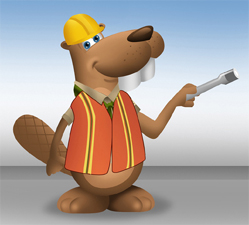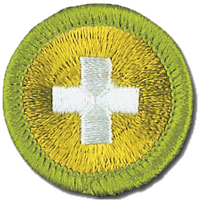Safety


Resources
- Safety Merit Badge Pamphlet
- Safety Merit Badge Class Preparation Page
- Safety Merit Badge Workbook
- Scoutmaster Bucky's Merit Badge Advancement Quick Reference
- Scoutmaster Bucky's Acknowledgement Form
Safety Requirements
Current Scouts BSA requirements
as of December 8, 2025
as of December 8, 2025
1.
Explain what safety is and what it means to be safe. Then prepare a
notebook to include:
a.
Newspaper, internet (with parent or guardian's permission), or other
articles, facts, and statistics showing common types and causes of
injuries in the home and in the workplace, and how these injuries could
be prevented
b.
Newspaper, internet (with parent or guardian's permission), or other
articles, facts, and statistics showing common types of crime and ways
to avoid being a crime victim
c.
A paragraph or more, written by you, explaining how a serious fire,
accident, crime, or a natural disaster could change your family life
d.
A list of safe practices and safety devices currently used by your
family, such as safety practices used at home, while working, and while
driving.
2.
Do the following:
a.
Using a safety checklist approved by your counselor, make an inspection
of your home. Identify any hazards found and explain how these can be
corrected.
b.
Review and develop your family's fire prevention plan. Review your
family's emergency action plan for fire in your home. As you develop
these plans with family members, share with them facts about the common
causes of fire in the home, such as smoking, cooking, electrical
appliances, and candles.
c.
Develop a family emergency action plan for a natural disaster.
d.
Explain what risk assessment is and its purpose.
e.
Explain the Scouting America's Commitment to Safety.
3.
Do the following:
a.
Discuss with your counselor how you contribute to the safety of
yourself, your family, and your community.
b.
Show your family members how to protect themselves and your home
from accidents, fire, burglary, robbery, and assault.
c.
Discuss with your counselor the tips for online safety. Explain the
steps individuals can take to help prevent identity theft.
d.
Discuss with your counselor the three R's of Youth Protection and how
to recognize child abuse.
4.
Show your family the exits you would use from different public buildings
(such as a theater, municipal building, library, supermarket, shopping
center, or your place of worship) in the event of an emergency. Teach your
family what to do in the event that they need to take shelter in or
evacuate a public place.
5.
Make an emergency action plan for five family activities outside the home
(at your place of worship, at a theater, on a picnic, at the beach, and
while traveling, for example). Each plan should include an analysis of
possible hazards, proposed action to correct hazards, and reasons for the
correction you propose in each plan.
6.
Plan and complete a safety project approved by your counselor for your
home, school, place of worship, place of employment, or community.
7.
Explain what the National Terrorism Advisory System is and how you would
respond to each type of alert.
8.
Learn about three career opportunities in the field of safety. Pick one
career and find out the education, training, and experience required for
this profession. Discuss this choice with your counselor, and explain why
this profession might interest you.